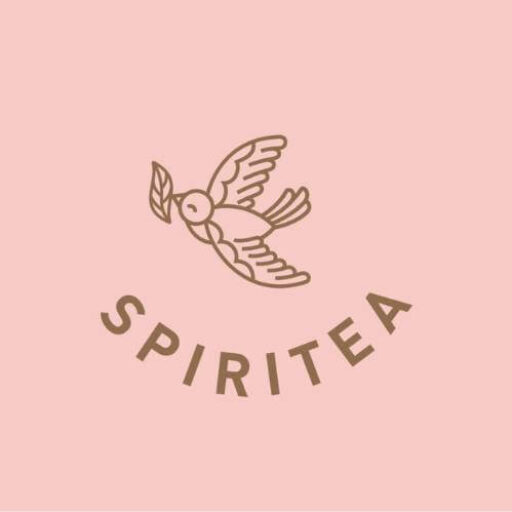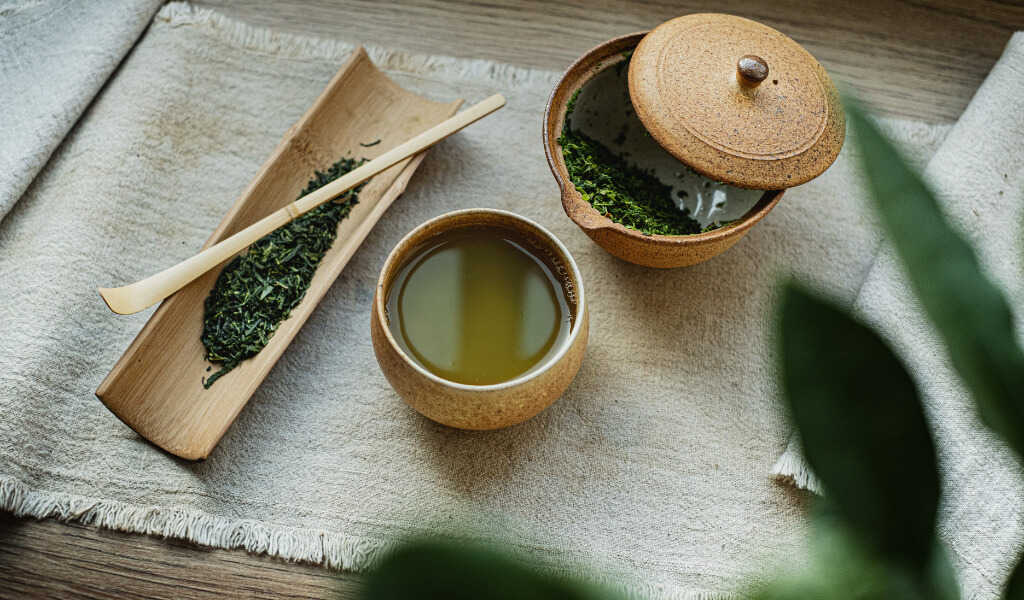What is Neem tea, and what is its usage? How is neem tea made, and what are the ingredients needed? And can neem tea help with skin issues such as acne and eczema?
In this detailed tutorial, I will take you on a trip to discover the secrets of Neem tea, diving into its rich history, amazing benefits, and practical applications. We’ll examine why this herbal infusion is gaining popularity and how it may be useful to your wellness regimen.
Quotes of tea at Today
“I want the home about me: candles burning, curtains drawn, warmth, tea, friendship, love.”
― Winston Graham, Jeremy Poldark
What is Neem?
Neem (Azadirachta indica) is a beautiful, natural herb originating from the neem tree, also known as Azadirachta indica or Indian lilac. This fantastic extract comes from the tree’s seeds and has various traditional uses. Not only is neem well-known for its ability to repel pests and insects, but it is also widely used in hair and dental care products. It’s a welcoming, simple component that can certainly make a difference!
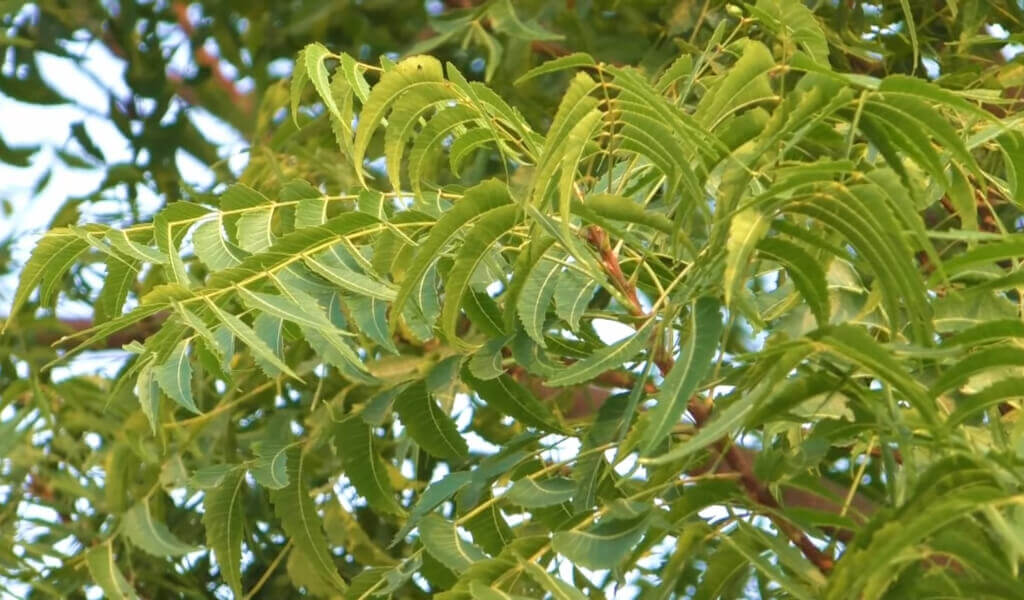
@nlechoppamusic Health And Wellness 1 On 1 With Me. Should I Do This More ? Neem Has Several More Benefits. Place orders Now NLEHealthAndWellness.com DETOX TEA KIT 💜
The bark, leaves, and seeds are used to make medicine. Less frequently, the root, flower, and fruit are also used.
Neem leaf is used for leprosy, eye disorders, bloody nose, intestinal worms, stomach upset, loss of appetite, skin ulcers, diseases of the heart and blood vessels (cardiovascular disease), fever, diabetes, gum disease (gingivitis), and liver problems. The leaf is also used for birth control and to cause abortions.
The bark is used for malaria, stomach and intestinal ulcers, skin diseases, pain, and fever.
The flower is used for reducing bile, controlling phlegm, and treating intestinal worms.
What is Neem Tea?
Neem tea is a sort of herbal tea prepared from the neem tree leaves, which grows in India and other regions of Asia. Neem loose leaf tea has a bitter flavor, like green tea but with hints of herbs. It doesn’t contain any caffeine, so you can drink it in the evenings without worrying about it affecting your sleep.
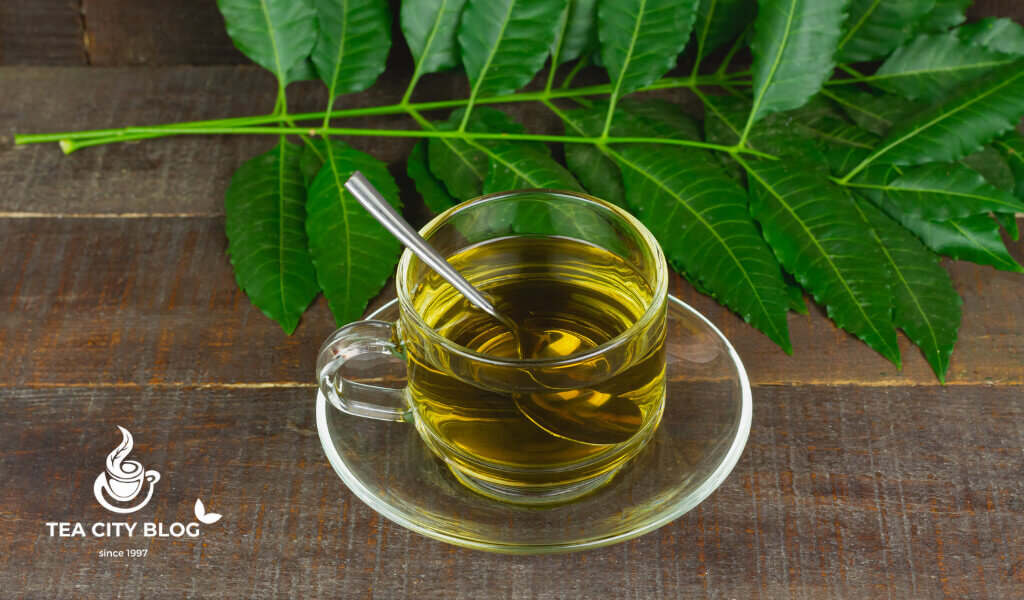
And guess what? It’s completely caffeine-free, making it a perfect companion for cozy evenings without affecting your sleep cycle.
This ancient Indian herbal remedy has been cherished for ages in Ayurvedic medicine due to its versatile applications. The mighty neem tree provides relief and boasts numerous benefits, such as natural sun protection and insect control, with little maintenance and minimal water consumption.
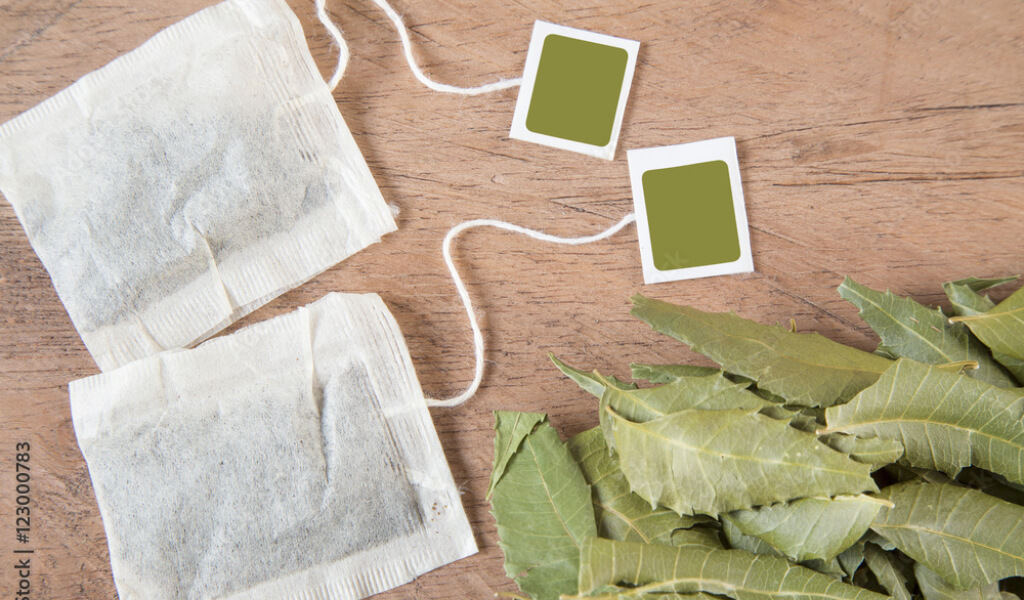
Neem tea for weight loss might be helpful because it boosts metabolism and reduces appetite. It contains flavonoids, which can help increase insulin sensitivity and reduce inflammation.
Meanwhile, Neem tea for the skin can also help reduce aging and improve skin elasticity due to its high content of antioxidants.
Thirdly, Neem tea for hair can improve hair health by strengthening hair follicles, preventing dandruff, and promoting hair growth. It comes with high levels of vitamin E, which is essential for healthy hair growth, and can also help reduce scalp inflammation.
Finally, some have been proven to have anti-diabetic characteristics, lowering blood sugar levels and increasing insulin sensitivity. Neem tea for diabetes contains compounds called triterpenoids and flavonoids, which can help regulate glucose metabolism and prevent diabetes-related complications.
Don’t let Neem tea’s bitter taste deter you from trying it! Various herbs can be added to soften its bitterness and create delightful flavor combinations. You’ll often find Neem tea blended with green or black teas and other herbal infusions, offering a unique and enjoyable experience for your taste buds.
Read More:
- What is Lemongrass Tea? 🌱Origin, Nutrition and how to drink
- What is Tulsi Tea? Grows, History, Used & Storing
- What is Chai tea? Interesting things you haven’t heard
- What is Hibiscus Tea? Discover the drink that captivated millions
- What is ginger tea? Things You didn’t know about it
- How and where does Chamomile grow?
How Neem Leaf Tea Grows
Hailing from the captivating Indian subcontinent, neem (Azadirachta indica) is a remarkably resilient tree that can flourish even in drought-prone conditions.
Just a little water is all it needs to survive! It thrives best in hot, tropical climates with arid to sub-humid environments and abundant sandy soil. This versatile tree is so prolific that it’s considered a weed in some parts of the world.
Despite growing in such barren soil, the neem leaf tea is quite a sight! It can reach an impressive 50 to 60 feet in height, with wide-spreading branches adorned with plump leaves that fan out into a feather or fin-like shape. This makes neem trees excellent shade providers, and you’ll often find them lining streets, gracing public buildings, and beautifying private gardens in India.
Neem is also known as the “Indian lilac” because of its gorgeous white blooms, which have the same enticing aroma as a lilac shrub. The tree bears olive-like fruits, each containing one to three seeds. It’s no wonder that every part of the neem tree – the root, bark, leaf, flower, fruit, and seed – has found a special place in Indian culture and beyond.
Read More: Discover the Health Benefits of Neem Tea & Side Effects
How It’s Used (Neem)
| Application | Summary |
| Ayurveda |
Versatile Ayurvedic herb addressing various health concerns.
|
| Food |
Adds unique bitterness to dishes; used in diverse cuisines globally.
|
| Garden |
Provides shade, natural fertilizer, and pesticide; attracts bees for specialty honey.
|
| Tea |
Steeped leaves create caffeine-free herbal infusion.
|
| Toothbrush |
Chewing neem twigs releases natural gum and oil for effective oral cleaning.
|
| Cosmetics |
Key ingredient in soap, beauty products, and toiletries.
|
| Wood & Textiles |
Comparable to mahogany for crafting; bark’s tannin for leather, fiber for rope.
|
In Ayurveda
For hundreds of years, neem has been revered as a versatile medicinal plant in traditional Ayurvedic medicine. Fondly known as “the village pharmacy,” neem has been used to address various health concerns, including cardiovascular, skin, respiratory, and digestive issues.
Whether teas, tonics, powdered capsules, or oils, neem can be incorporated into a professionally guided Ayurvedic treatment plan to help promote well-being.
In Food
Neem’s characteristic bitterness can add a unique twist to various dishes. In India, various recipes use neem shoots and leave like vegetables.
In Tamil cuisine, the flowers find their way into soups and stews, while they are also combined with jaggery (unrefined brown sugar) for a traditional New Year dish symbolizing life’s bittersweet moments.
In Bengal, neem leaves are fried with eggplant to create a delicious appetizer.
Southeast Asian countries like Cambodia, Thailand, and Vietnam have also embraced neem in their culinary creations. In Myanmar, people often boil bitter neem leaves and flowers with tangy tamarind fruit as a vegetable or pickle the leaves as a tasty condiment. The protein-rich natural gum found in neem bark is even used as a food additive or filler in food production.
In the Garden
Neem trees are famous for their Indian gardens, providing much-needed shade in drought-stricken areas. Pruned branches and leaves can be turned into natural fertilizer by grinding and composting them. The tree’s chemical properties are also a natural pesticide, helping gardens flourish.
Boiled neem leaves serve as a deterrent for pesky birds like sparrows, while the dry leaves can be sprinkled around kitchens to keep bugs and rodents away. Beekeepers often rely on neem trees for their fragrant flowers, which attract bees that produce specialty neem honey.
As a Tea
Brewing a cup of neem powder is as simple as steeping fresh or dried neem leaves in hot water. The result is a caffeine-free herbal infusion that’s perfect for any time of the day.
As a Toothbrush
Neem twigs are nature’s answer to toothbrushes! This age-old tooth-cleaning method is still prevalent in India, Africa, and the Middle East. Chewing on a neem twig releases its natural gum and oil, which can then be used to brush your teeth, gums, and tongue, effectively cleaning your mouth and getting rid of bacteria.
In Cosmetics:
Did you know nearly 80% of India’s neem oil is used in soap manufacturing?
Its popularity does not end there; Western society has accepted neem as a beneficial element in natural beauty products like toothpaste, shampoo, face cream, cosmetics, and even nail paint.
For Wood & Textiles
Neem tree wood is often compared to mahogany for its beauty and strength, making it an excellent choice for crafting furniture, drum bases, boats, and boat oars. The tree’s bark is rich in tannin, making it perfect for turning animal skins into leather. The bark also produces a coarse fiber commonly woven into rope.
What is Neem tea made of?
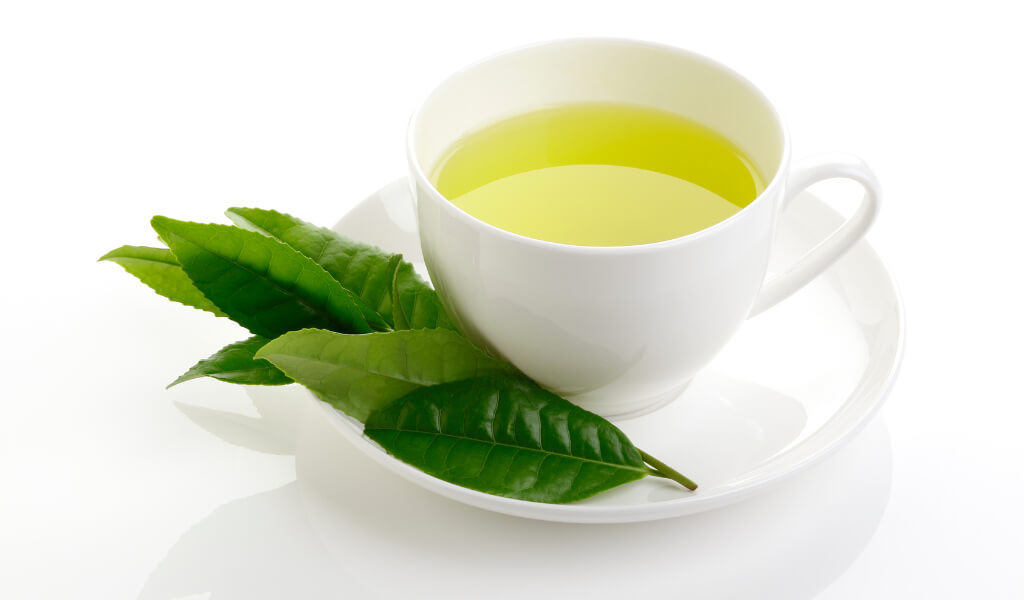
The essential ingredients for preparing neem tea are:
- Neem leaves: Fresh or dried neem leaves are the primary ingredient for making neem tea. The leaves contain various beneficial compounds that give neem tea its unique properties.
- Water: Fresh, filtered water is essential for brewing a high-quality cup of neem tea. The water temperature should be just below boiling (around 190-200°F or 87-93°C) to extract the beneficial compounds from the leaves without making the tea too bitter.
Optional ingredients:
To enhance the flavor of neem tea and make it more palatable, you can add various herbs and spices. Some popular options include:
- Ginger: Adding fresh or dried ginger can help balance the bitterness of neem tea and provide additional health benefits.
- Cinnamon: Cinnamon adds a sweet, warming flavor to the tea, complementing the bitter taste of neem.
- Lemon or Lime: A squeeze of lemon or lime juice can add a refreshing, tangy twist to the tea and help reduce bitterness.
- Honey or a natural sweetener: Adding a bit of honey or another natural sweetener can help balance the bitter flavor of neem tea and make it more enjoyable to drink.
Remember that while these additional ingredients can improve the taste of neem tea, the core benefits come from the neem leaves themselves. Be sure to use fresh or properly dried and stored neem leaves to maximize the potential health benefits of your tea.
Composition and Properties of Neem oil
The composition of neem oil comprises several ingredients, with fatty acids and triterpenes being the most prominent. If we take a closer look at the oil’s composition and specifically its acidic component, as shown in the table, we’ll notice a resemblance to olive oil and cocoa butter. The main fatty acid found in the oil is oleic acid, which is a monounsaturated fatty acid with 18 carbon atoms. This gives the oil good oxidation resistance.
The oil also contains a good amount of stearic acid, a saturated fatty acid abundant in cocoa butter.
| Typical acid composition (%) of neem oil | |
| Oleic acid | 25-54% |
| Linoleic acid | 6-16% |
| Palmitic acid | 16-33% |
| Stearic acid | 9-24% |
| a-linolenic acid | ? % |
| palmitoleic acid | ? % |
The unique composition of neem oil gives it some amazing skincare benefits. It blends well with the hydrolipidic film of the skin, which helps prevent water from evaporating. As a result, it is an excellent moisturizer and emollient, which is useful in the cosmetics sector.
Furthermore, it is thought that neem oil has antiparasitic, anti-inflammatory, and perhaps antifungal qualities.
Neem tea flavor
We have to admit, Neem Tea can be quite a bitter experience. Its taste is similar to tonic water, which gets bitterness from Quinine.
Interestingly, neem shares many similarities with quinine, including its usage in malaria treatment and the fact that both are produced from trees.
To make Neem Tea more enjoyable, we recommend sipping it cold, mixed with a splash of orange juice or fruit juice of your choice. This will help disguise the bitterness and transform it into a refreshing beverage. You can also try blending Neem Tea with other teas to balance out the taste and reap additional health benefits.
How to make neem tea?
Here’s a popular neem tea recipe you can easily prepare at home:
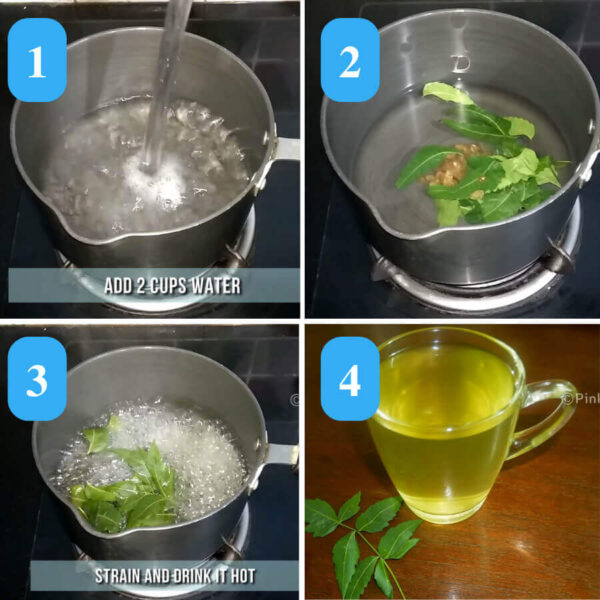
What you’ll need:
- Neem leaves or Neem capsules
- Tea leaves
- Spring water
- Lemon
- Flavorings (cinnamon, peppermint, fennel seeds, etc.)
- Sweetener (honey, sugar, etc.)
Let’s get started:
- Pour one cup of water into a saucepan and bring it to a boil.
- Add two teaspoons of dried neem leaves or one neem capsule.
- Mix in half a teaspoon of tea leaves.
- Add a pinch of your favorite flavorings or spices, like cinnamon or peppermint.
- Allow the mixture to steep for 10 to 15 minutes.
- Add a squeeze of lemon and one tablespoon of honey to enhance the taste.
- Take a sip, sit back, and enjoy!
If you don’t have fresh neem leaves on hand, don’t worry! You can substitute organic neem drops, capsules, neem tea bags, or even neem bark. Happy brewing!
@empress_recipes How To Make Healthy Neem Tea and its benefits #empress_recipes #fyp #govirial #recipeoftheday #neemleaves #healcancer #tiktokvideoscreator
What Are the Special Precautions and Warnings?
Hey there! If you’re considering using Neem, here’s what you need to know.
- When taken by mouth: Neem bark extract is generally considered safe for most adults when used for short periods. Taking doses up to 60 mg per day for 10 weeks has sometimes been safe. However, taking large doses or using Neem for long periods may be unsafe and could harm your kidneys and liver.
- When applied to the skin: Neem oil or cream is likely safe when used on the skin for up to 2 weeks.
- When applied inside the mouth: Neem leaf extract gel is safe when applied inside your mouth for 6 weeks.
- Pregnancy: If you’re pregnant, it’s best to avoid taking Neem bark or oil by mouth as it could cause a miscarriage.
- Breast-feeding: There isn’t enough information to know if Neem is safe for breastfeeding mothers, so it’s best to avoid it for now.
- Children: Neem extract shampoo is probably safe when applied to the head for 10 minutes and then rinsed with warm water. However, taking seeds or seed oil by mouth is unsafe for children and could lead to serious Neem tea side effects such as vomiting, diarrhea, drowsiness, seizures, loss of consciousness, coma, and even death.
- Auto-immune diseases: If you have a condition such as multiple sclerosis, lupus, rheumatoid arthritis, or any other auto-immune disease, it’s best to avoid using Neem as it may cause the immune system to become more active and worsen your symptoms.
- Infertility: There’s evidence that Neem may harm sperm and reduce fertility, so it’s best to avoid it if you want to have children.
- Organ transplant: If you’ve had an organ transplant, it’s best to avoid Neem as it may decrease the effectiveness of your transplant medications.
- Surgery: Neem may lower blood sugar levels, so it’s best to stop using it at least 2 weeks before a scheduled surgery to avoid any potential interference with blood sugar control during and after the procedure.
That’s a quick rundown of what you need to know about using Neem. Stay safe!
How To Buy And Store Neem
Dried herbs, such as neem tea leaves, don’t exactly “spoil,” but they can lose their freshness. When buying teas and herbs, make sure you buy from a reputable firm that can offer details on when and how the product was processed and packed. The flavor of most teas and herbs is at its best when enjoyed soon after their processing date.
If stored correctly, neem can stay fresh and enjoyable for up to two years. To keep your neem as fresh as possible for as long as possible, store it in a cool, dark spot, away from light, oxygen, moisture, and aromatic pantry neighbors like coffee or spices.
Where can I buy neem tea?
Finding neem tea has never been easier! You have many options whether you prefer to shop online or in person. Here are a few suggestions to get you started:
- Online retailers like Amazon, eBay, and Walmart often offer neem tea from different brands. Remember to check reviews and compare prices to find the best deal.
- If you’re looking for a more local option, check out health food stores or natural product shops near you. You can visit the store or check their website to see if they carry neem tea.
- Try specialty tea shops if you’re a tea lover. Some of these stores might already carry neem tea, or they can order it for you. Just ask!
- Neem is originally from India, so you may find it at Indian grocery stores or ethnic markets that sell Indian products.
- If you prefer to shop online, many tea stores offer neem and other teas. Some popular ones include Adagio Teas, Teavana, and DAVIDsTEA.
Remember always to check the quality, ingredients, and origin of your neem tea to ensure it’s safe and effective.
Conclusion
Neem tea is a lovely herbal beverage with a long history and several possible health advantages.
It contains antioxidants, which may help strengthen your immune system, improve digestion, decrease inflammation, and even keep your teeth healthy by combating plaque.
While several studies have demonstrated the advantages of neem tea, additional study is required to understand its impact on diabetes properly.
Also, it’s essential to know that neem tea can interact with certain medications. If you’re taking any prescription drugs, you should check with your doctor before adding neem tea to your diet.
Otherwise, enjoy this delicious and potentially healthy drink for its unique flavor and health benefits!
Thanks for Spiritea Drinks
FAQ
Can you explain what Neem seed meal tea is?
Neem seed meal tea, a cozy blend of water and the leftovers from making neem oil is a real treat for your plants! It helps keep pesky termites and other harmful insects at bay, making it a friendly and easy-to-understand solution for neem plant care.
Can i drink neem tea every day?
Taking up to 60 mg of Neem daily for 10 weeks is safe. However, be cautious with consuming or using large amounts for extended periods, as it might not be safe for your body. Keep in mind that it could affect your kidneys and liver negatively.
Who should not drink neem tea?
Neem tea is generally safe for daily consumption, provided it is taken in moderate quantities. However, it’s always advisable to consult with a healthcare professional before incorporating it into your daily routine, as individual health conditions and tolerances may vary.
Is it safe to drink boiled neem leaves?
Drinking boiled neem leaves is considered safe for most people. The boiling process helps to extract the beneficial compounds from the neem leaves. However, as with neem tea, it’s best to consult your healthcare provider before starting any new regimen.
Who should not eat neem leaves?
Individuals with liver or kidney disease, those who are pregnant or breastfeeding, and those taking prescribed medications for chronic diseases should avoid consuming neem leaves. Always seek medical advice before beginning any new herbal consumption.
What is the best time to drink neem tea?
The optimal time to drink neem tea may vary depending on individual health goals and tolerances. However, many prefer to consume it on an empty stomach first thing in the morning for maximum absorption of its healthful properties.
I’m Shanna, creator of Spiritea Drinks. I’m all about teaching people to grow their own food, tea, cook what they harvest, and eat with the seasons.
